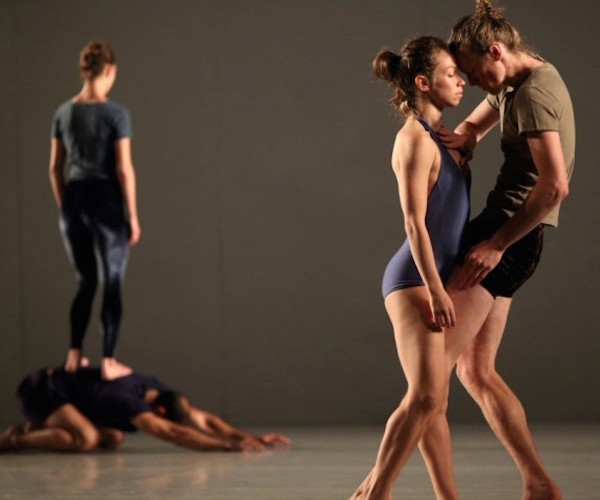Film Review: “Mr. Gaga” — An Illuminating Documentary About Dance
Mr. Gaga is a sensitive and engaging documentary of an Israeli artist.
Mr. Gaga directed by Tomer Heymann. Screening at the Kendall Square Cinema, Cambridge, MA, through March 16.

A scene from the dance documentary “Mr. Gaga.”
By Helen Epstein
Disregard the unfortunate title – this is reportedly the most popular documentary ever made in Israel. Mr. Gaga is an unusually subtle and insightful film about an internationally-acclaimed Israeli choreographer. Ohad Naharin is the 65-year-old artistic director of the Batsheva Dance Company in Tel Aviv. “Gaga” is the name Naharin gave to the signature style of movement he developed before Lady Gaga was born.
Ohad Naharin was born in 1952 on Kibbutz Mizra in northern Israel. His mother was a Feldenkreis instructor, choreographer, and dancer; his father was a psychologist and actor. The family left the kibbutz when Naharin was five and, although the parents are not interviewed in any depth, an unusual (for Israel of the time) series of home movies document the influence exerted by a communal kibbutz childhood, followed by an early interest in movement. During his time in military service (compulsory for most Israeli teenagers), Naharin was chosen as a member of one of Israel’s elite entertainment units, often an entrée into Israel’s artistic community.
At 22, Naharin joined the Batsheva Dance Company in Tel Aviv. There, he was picked out by Martha Graham, who invited him to New York. He danced briefly with her company, with Maurice Béjart, and trained at the School of American Ballet and Juilliard, before quitting all of them to do his own work. During this period he fell in love with Mari Kajiwara, a dancer and assistant to Alvin Ailey, who supported him when they lived in New York. They later married and she moved with him to Tel Aviv.
Director Tomer Heymann, an award-winning film-maker who had no experience of dance prior to seeing Naharin’s work, became obsessed with making a movie about him. Though Naharin had, until approached by Heymann, been opposed to any video documentation of his work, he gave the director carte blanche to film at Batsheva’s studios and also gave Heymann his revealing cache of home movies and videos. For his part, Heymann discovered some extraordinary footage: views of the army entertainment unit during the Yom Kippur war of 1973 as well as glimpses of Naharin’s training with Béjart, Graham, and at the American Ballet School.
The result is well worth seeing: this is an absorbing and beautifully filmed documentary that is at once a look at Ohad Naharin’s development from childhood to maturity, his formation of a new and idiosyncratic language of movement, his creative process, his relationship to his dancers, and the evolution (and occasional politicization) of dance in Israel.
Helen Epstein reviews regularly for The Arts Fuse. Her books on performers can be found here.
Tagged: Bathsheba Dance Company, Culture Vulture, Israeli choreographer, Mr.Gaga, Ohad Naharin, documentary
